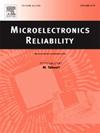Investigation on FCBGA package with vertical-aligned carbon fiber thermal pad as thermal interface material
IF 1.6
4区 工程技术
Q3 ENGINEERING, ELECTRICAL & ELECTRONIC
引用次数: 0
Abstract
Flip chip ball grid array (FCBGA) is the current main packaging form of CPU and GPU. With the miniaturization and intelligence of artificial intelligence chips, chip power consumption of FCBGA continues to increase (the power consumption of H100 has exceeded 800 W) and the heat dissipation problem has become increasingly serious. In the heat dissipation system of the entire chip, the thermal conductivity of thermal interface material (TIM) is a key bottleneck that limits the improvement of FCBGA package heat dissipation capability. Currently commercial TIMs such as X-23 have a thermal conductivity of 3.8–6 W/MK, which is not enough to cope with the high heat dissipation needs of existing FCBGAs. In this article, we introduced oriented carbon fibers into a silicone oil matrix to prepare a thermal pad with a thermal conductivity of 21.0 W/mK, and used it as TIM1 in FCBGA package. By optimization the key process including lid attach, dicing saw and package structure design, coverage rate reached 88.22 % after packaged. Thermal simulation shows that replace TIM in FCBGA from X-23 to homemade thermal pad, junction temperature (Tj) is reduced from 69.9 to 66.8 °C. In addition, reliability test was used carried out on FCBGA packaged incorporating carbon fiber thermal pad as TIM.
求助全文
约1分钟内获得全文
求助全文
来源期刊

Microelectronics Reliability
工程技术-工程:电子与电气
CiteScore
3.30
自引率
12.50%
发文量
342
审稿时长
68 days
期刊介绍:
Microelectronics Reliability, is dedicated to disseminating the latest research results and related information on the reliability of microelectronic devices, circuits and systems, from materials, process and manufacturing, to design, testing and operation. The coverage of the journal includes the following topics: measurement, understanding and analysis; evaluation and prediction; modelling and simulation; methodologies and mitigation. Papers which combine reliability with other important areas of microelectronics engineering, such as design, fabrication, integration, testing, and field operation will also be welcome, and practical papers reporting case studies in the field and specific application domains are particularly encouraged.
Most accepted papers will be published as Research Papers, describing significant advances and completed work. Papers reviewing important developing topics of general interest may be accepted for publication as Review Papers. Urgent communications of a more preliminary nature and short reports on completed practical work of current interest may be considered for publication as Research Notes. All contributions are subject to peer review by leading experts in the field.
 求助内容:
求助内容: 应助结果提醒方式:
应助结果提醒方式:


